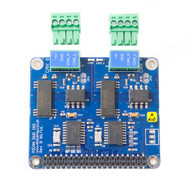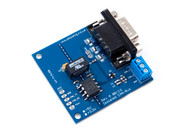Product Description
Free Shipping Within the United States!
The CAN-11 CAN Bus DIN Rail Isolated Repeater is a robust, industrial-grade device designed to enhance the reliability and scalability of Controller Area Network (CAN) systems. It offers 1.5 kV electrical isolation using magnetic coupling technology, effectively protecting network components from electrical surges and ground loop interference. With support for CAN 2.0A/B standards and optional compatibility with the CAN-FD protocol, the repeater ensures seamless integration into various applications, including automotive electronics, industrial automation, and intelligent instrumentation. Its plug-and-play design, coupled with a slim modular form factor and detachable terminals, facilitates easy installation on standard 35mm DIN rails, making it suitable for diverse network topologies such as linear, star, and tree structures.
The CAN-11 features adaptive baud rate support ranging from 10 Kbps to 1 Mbps (up to 5 Mbps for CAN-FD), enabling it to accommodate a wide range of network speeds. Its built-in bus arbitration logic and dominant timeout (DTO) function enhance network stability by isolating faulty segments, ensuring uninterrupted communication among healthy nodes. The device's loopback time is as low as 110 nanoseconds, and it can support up to 110 nodes on the bus. Operating within a voltage range of 9 to 28 VDC and a temperature range of -25°C to +70°C, the CAN-11 is engineered for durability in demanding environments. Additionally, LED indicators provide real-time status updates for power and data traffic, aiding in efficient network monitoring and diagnostics.
See also our post: CAN Bus Repeaters: Overview and Technical Considerations...
Features
- Industrial grade CAN bus isolated repeater, 100Mbps high speed isolation
- Standard 35mm DIN rail mounting, 9-28VDC wide voltage supply
- Supports CAN2.0A/B Standard (optional support for the latest CAN-FD standard)
- Slim modular design with detachable terminals
- Magnetic coupling isolation technology, 1.5KV electrical isolation, interface surge protection
- Power supply, CAN Bus pre-stage and rear-end three-terminal isolation
- Built-in bus arbitration logic, bus data LED indication;
- 10K-1Mbps baud rate adaptive, loopback time as low as 110nS
- 110 node bus load capacity
Failure isolation function:
CAN-11 provides fail-isolation. When one end of the bus data continues to be "dominant", the other side of the transceiver will trigger the dominant timeout (DTO) function, thereby isolating the failed side bus, ensuring that the typical side bus node remains in Normal communication.
Technical Characteristics
Item Min Typical Max
Input Voltage 9 VDC 24 VDC 28 VDC
Input Current @24VDC 20 mA
Operating Temperature -25C +25C +70C
Storage Temperature -25C +25C +85C
Humidity 95% (non-condensing)
CAN Bus Isolation Voltage 1500 VDC
Surge TVS 600 W/line
Protection Voltage 30 V
Overcurrent Protection 200 mA
Loopback Time 110 nsec
Baud Rate 10 Kbps 1 Mbps (CAN-FD 5 Mbps)
Dominant Timeout (T_DTO) 1.2 msec 3.8 msec
Dimensions 118 x 100 x 17.5 mm
4.6" x 3.94" x 0.7"
Installation 35 mm DIN Rail
Galvanic Isolation
High noise levels on a CAN bus network have the potential to destroy CAN bus transceivers. This noise originates mainly from two sources, ground loops and electrical line surges. Protecting a network against this destructive energy requires the galvanic isolation of the CAN bus system from other local node circuitry.
For more information, see: Galvanically Isolated CAN Bus Transceivers Protect Networks Against Destructive Energy...
Dimensions

Connections
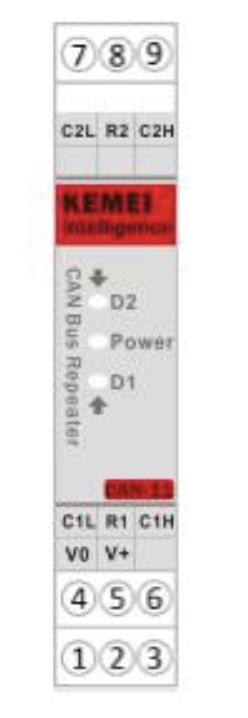
PIN Connection Description
1 V0 Power Supply -
2 V+ Power Supply +
3 - NC
4 C1L CAN_L 1
5 R1 Termination Resistor (Connect to C1L to activate)
6 C1H CAN_H 1
7 C2L CAN_L 2
8 R2 Termination Resistor (Connect to C2L to activate)
9 C2H CAN_H 2
LED Indicators
Name Status Description
Power Green Power On
D1 Green CAN1 Data Traffic
D2 Green CAN2 Data Traffic
Supported Network Architectures
Branch Extension
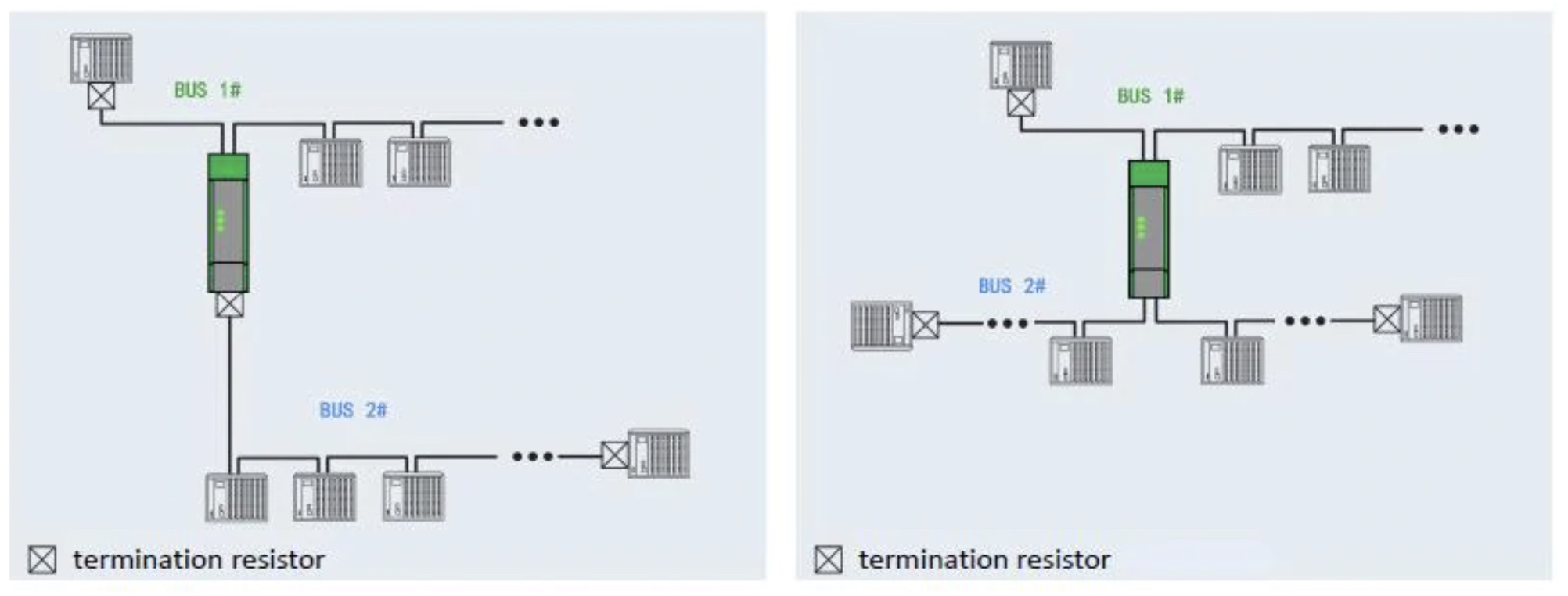
Linear Topology
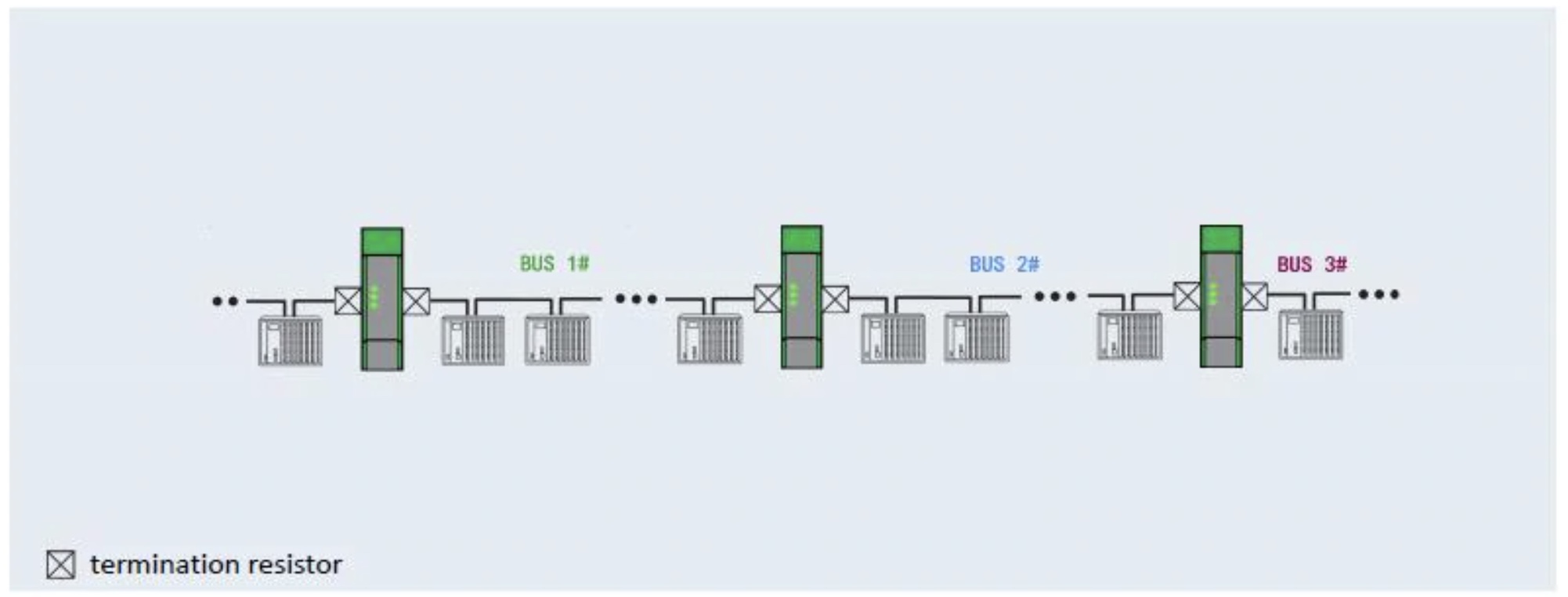
Star Topology
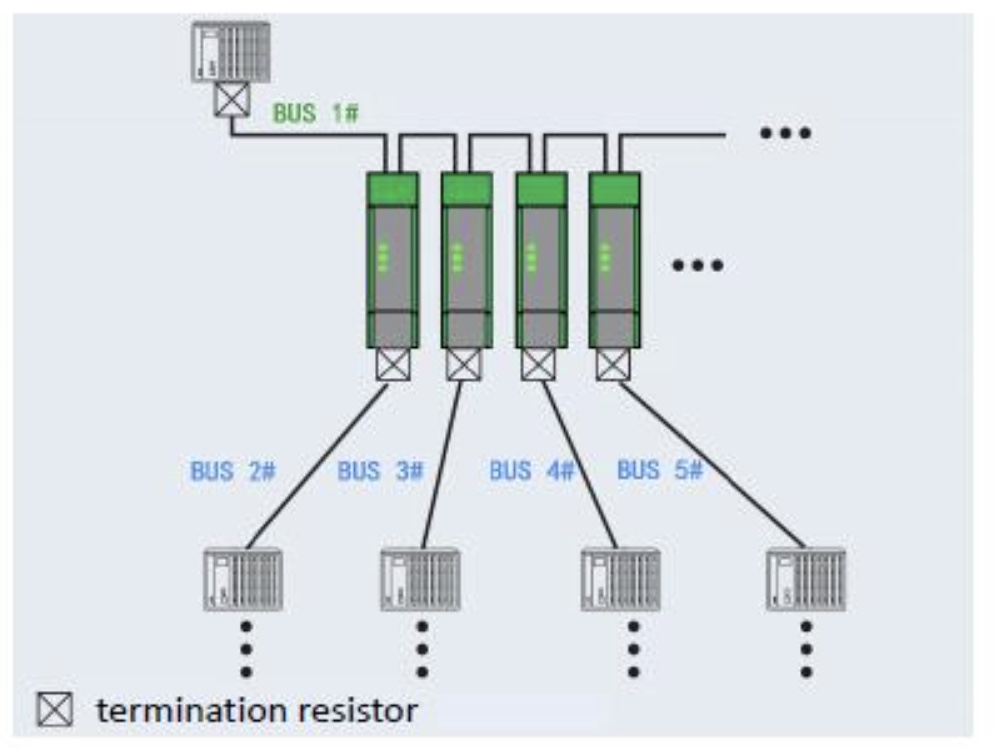
Tree Topology
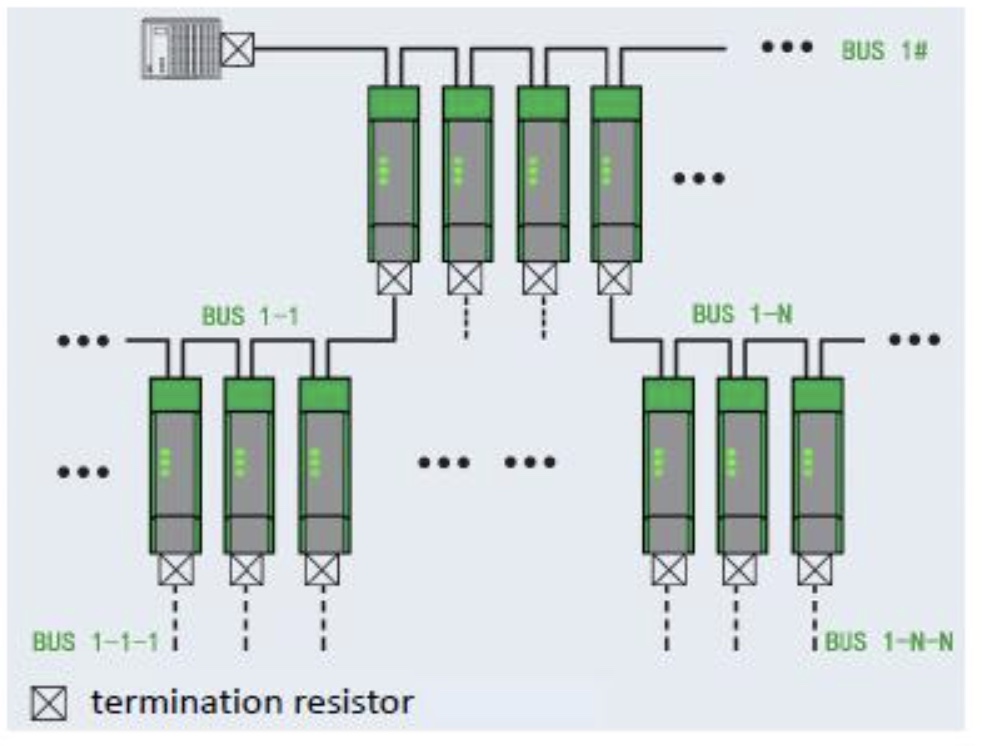
CAN Bus Termination Resistor
Activate termination resistors on both physical ends of the CAN Bus networks:
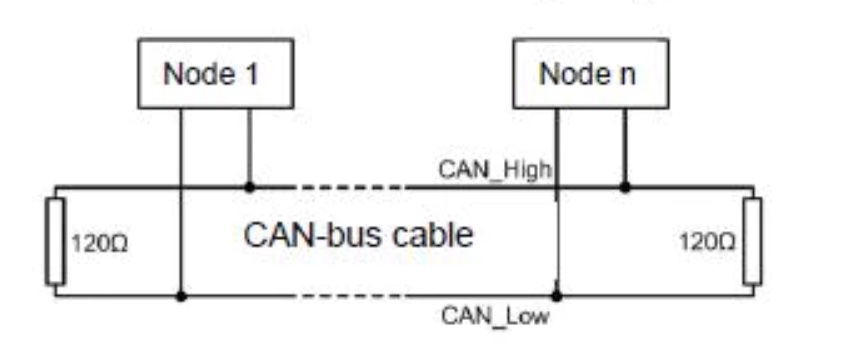
For more information, see: Controller Area Network (CAN Bus) - Physical Layer And Bus Topology...
Usage of the built-in termination resistor:
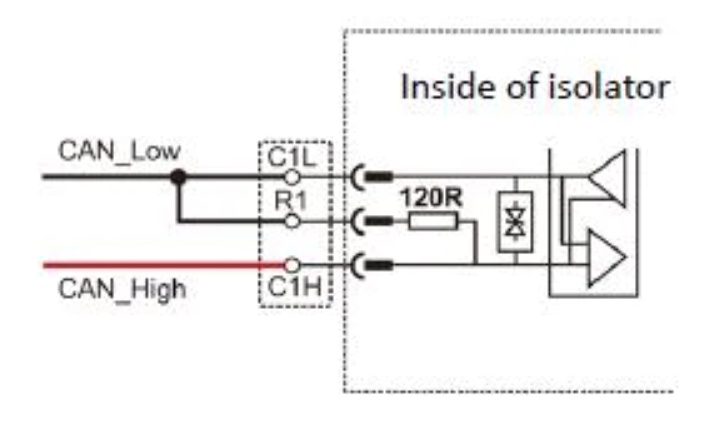
Block Diagram
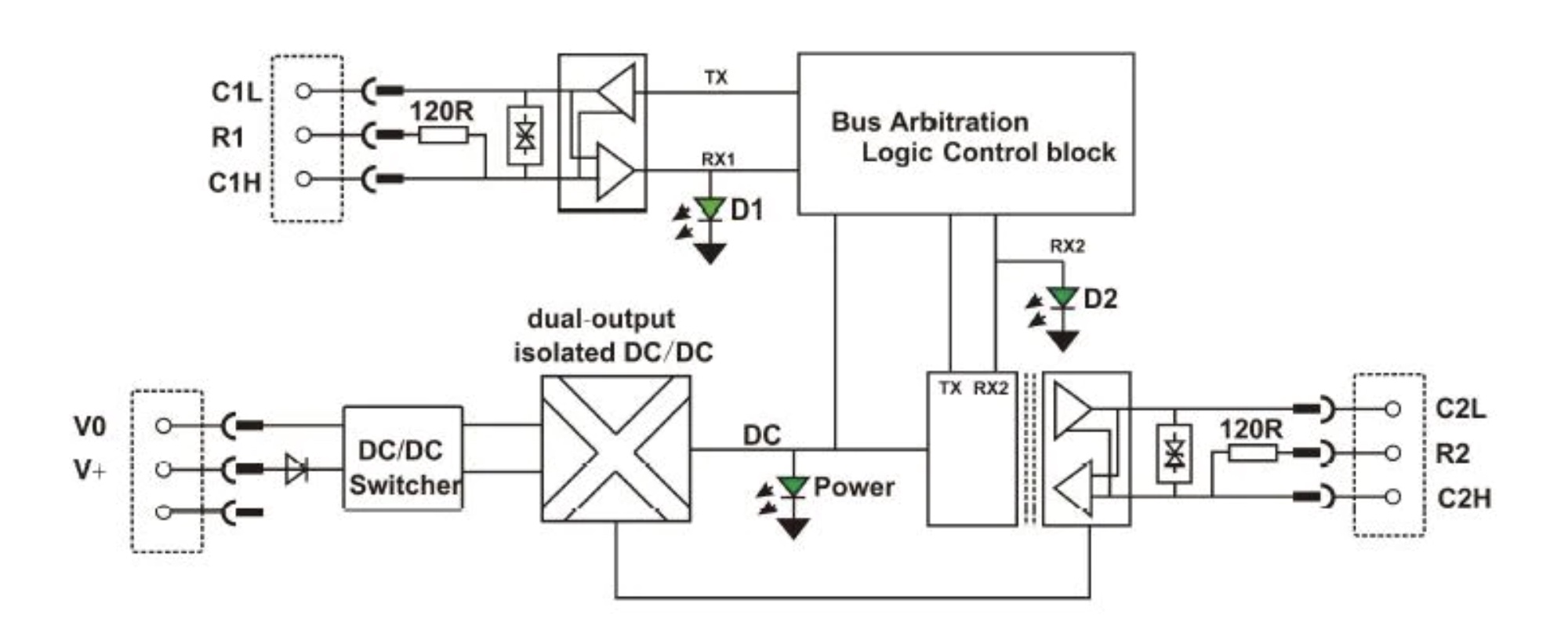
 Loading... Please wait...
Loading... Please wait...






